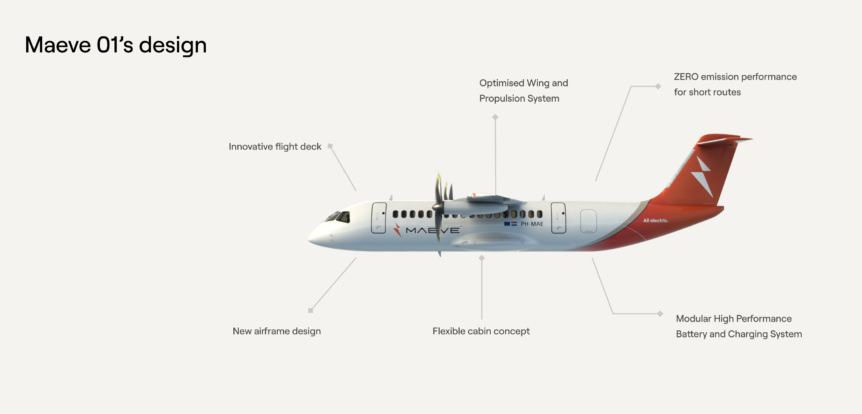Electric aircraft sales told the tale at this year’s Paris Air Show. European and American firms sold, or received letters of intent for, hundreds of craft, especially of interest in the electric, hydrogen, and hybrid categories we’ll discuss here. We will have subsequent entries on other craft of interest at the show and the commercial possibilities they encompass. Afrijet’s electric intentions French airframer Aura Aero signed a Memorandum of Understanding (MOU) for “multiple electric aircraft” at the Paris Air Show. This came a day after a Philippine-based Asian aerospace firm signed a Letter of Intent for three electric aircraft with Aura Aero. The 19-passenger, eight motor, ecologically friendly aircraft has an all-up weight of 8.6 tons and a hybrid cruising speed of 250 knots true air speed (288 mph). Its pressurized cabin can alternately carry 1,900 kilograms (4,180 pounds) of cargo with a total volume of 21.5 cubic meters (759.3 cubic feet). Total operating costs will run only one-tenth of …
Air New Zealand Plans for Zero Emissions
Air New Zealand has a five-part plan for reducing and even eliminating aviation emissions with some well-defined approaches and goals. The airline hopes to achieve net zero by 2050, with demonstrable steps toward that starting now. Five Key Elements ANZ will rely on five key elements in its quest for zero-emission flight. They are already involved in producing sustainable aviation fuel (SAF), partnering with makers of zero emission aircraft technologies, renewing their fleet, reducing carbon emissions through improved flight and ground operations, and removing carbon using best known techniques. You can read the full sustainability report here. Producing SAF Sustainable aviation fuel (SAF), explains Air New Zealand, “Is made from a variety of sustainable resources other than crude oil, such as used cooking oils, landfill waste, forestry waste, carbon captured from the air and green hydrogen. It has the potential to dramatically reduce lifecycle carbon emissions by up to 80 percent or more compared with traditional jet fuel.” Since New …


